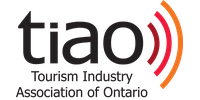The 2025 Ontario Budget, tabled amid ongoing economic uncertainty, outlines a multi-year plan to return to fiscal balance by 2027–28. With slower GDP growth and employment gains expected, the government is prioritizing resilience, workforce development, and regional infrastructure—areas critical to Ontario’s tourism sector.
TIAO’s pre-budget recommendations under Economic Growth, Workforce Development, and Infrastructure Investment are reflected across several initiatives. The budget also aligns closely with the forthcoming Ontario Tourism Strategy, demonstrating tourism’s role in economic recovery and long-term growth.
1. Support for Businesses Impacted by U.S. Tariffs
- $11B in relief measures, including:
- Tax deferrals on 10 provincially administered taxes until October 2025 ($9B in liquidity).
- $2B in WSIB rebates to help employers retain staff.
- $5B Protecting Ontario Account for businesses facing tariff-related disruptions.
- $60M to support workers and communities, including:
- $20M for training centres for laid-off workers.
- $40M Trade-Impacted Communities Program.
2. Interprovincial Trade and Domestic Growth
- New legislation to reduce internal trade barriers across Canada.
- $50M Ontario Together Trade Fund to boost competitiveness and reduce reliance on U.S. markets.
3. Tourism-Specific Investments
Tourism is formally recognized as a strategic sector in the budget:
- Marketing Support: Targeted funding anticipated for summer 2025 tourism campaigns.
- Destination Wasaga:
- $2M for tourism planning.
- $25M for the revitalization of Nancy Island Historic Site.
- Destination Niagara:
- $35M+ over three years for new attractions, including support for the Shaw Festival.
- A study to enhance air access to Niagara, engaging carriers and federal partners.
4. Beverage and Agri-Tourism Sector Support
- $175M Ontario Grape Support Program (2025–2030).
- $84M VQA Wine Support Program over five years.
- LCBO mark-up and tax cuts across the alcohol sector:
- 50% reduction for microbreweries and distilleries.
- Enhanced wholesale discounts to bars, restaurants, and retailers.
- New “refreshment beverage” category and mark-up modernization.
- Ontario will be implementing several changes in the near term to foster a more dynamic and competitive alcohol marketplace while creating conditions to support affordability for consumers. These actions represent support of approximately $100 million in 2025–26 and approximately $155 million in 2026–27
5. Rural and Northern Development
- $10M annually for Rural Ontario Development (ROD) starting 2025–26.
- Continued investments in:
- Broadband expansion ($4B+ since 2019).
- Ring of Fire infrastructure and Indigenous partnerships.
- $400M for small and Northern community infrastructure projects.
6. Workforce Development
- $1B additional investment in the Skills Development Fund (SDF), totaling $2.5B over three years.
- This presents a significant opportunity to address ongoing labour shortages in the tourism and hospitality sector.
7. Infrastructure & Mobility Enhancements
- $30B over 10 years for highways and roads:
- Projects including; Brantford bypass, 401 tunnel feasibility, twinning in Northwestern Ontario.
- $61B over 10 years for public transit:
- Two-way, all-day GO service to Kitchener-Waterloo.
- GO 2.0 service expansion and new stations across the GGH.
- Restoration of the Northlander rail line between Timmins and Toronto.
- New Shortline Railway Investment Tax Credit ($23M over 3 years).
8. Green Transportation
- $92M for EV charging infrastructure, filling service gaps and improving access to rural tourism destinations.
This year’s budget contains targeted investments and policy measures that support Ontario’s tourism recovery and future growth. TIAO welcomes the government’s commitment to our sector and will continue to advocate for inclusive access to funding programs, infrastructure, and workforce solutions.
